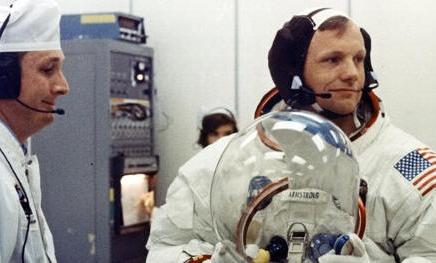|
Neil A. Armstrong, the first man to walk on the
moon, was born in Wapakoneta, Ohio, on August 5,
1930. He began his NASA career in Ohio. After
serving as a naval aviator from 1949 to 1952,
Armstrong joined the National Advisory Committee
for Aeronautics (NACA) in 1955. His first
assignment was with the NACA Lewis Research
Center (now NASA Glenn) in Cleveland. Over the
next 17 years, he was an engineer, test pilot,
astronaut and administrator for NACA and its
successor agency, the National Aeronautics and
Space Administration (NASA).
As a research pilot at NASA’s Flight Research
Center, Edwards, Calif., he was a project pilot
on many pioneering high speed aircraft,
including the well known, 4000-mph X-15. He has
flown over 200 different models of aircraft,
including jets, rockets, helicopters and
gliders. Armstrong transferred to
astronaut status in 1962. He was assigned as
command pilot for the Gemini 8 mission. Gemini 8
was launched on March 16, 1966, and Armstrong
performed the first successful docking of two
vehicles in space.
As spacecraft commander for Apollo 11, the first
manned lunar landing mission, Armstrong gained
the distinction of being the first man to land a
craft on the moon and first to step on its
surface. Armstrong subsequently held
the position of Deputy Associate Administrator
for Aeronautics, NASA Headquarters, Washington,
D.C. In this position, he was responsible for
the coordination and management of overall NASA
research and technology work related to
aeronautics.
He was Professor of Aerospace Engineering at the
University of Cincinnati between 1971-1979.
During the years 1982-1992, Armstrong was
chairman of Computing Technologies for Aviation,
Inc., Charlottesville, Va. He
received a Bachelor of Science Degree in
Aeronautical Engineering from Purdue University
and a Master of Science in Aerospace Engineering
from the University of Southern California. He
holds honorary doctorates from a number of
universities.
|



